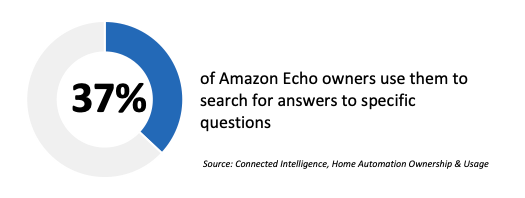
Smart Homes Are Getting the Tiny Treatment
Plant Prefab’s LivingHome10 is a 496 square foot tiny one bedroom, one bathroom home complete with a smart voice command system that can access Wifi, adjust the thermostat, control indoor and outdoor lights, monitor energy consumption, and yes, tell jokes, all thanks to Alexa and a package of smart devices that comes standard. Homeowners receive a visit from an Amazon Expert who activates all of the devices and helps customize the experience based on the homeowner’s personal preferences. Buyers also have the option to upgrade the standard smart experience to include a smart entertainment package, appliance package, and/or security package. This Accessory Dwelling Unit is only available in the Los Angeles area and is marketed as an affordable and sustainable backyard unit…you know, for mother-in-laws or for rental income, what have you. The estimated cost starts at a base of $154K.
The NPD Take:
- If you are going to have a new (tiny) home, why not make it smart from the start? Even if you only have to travel a few feet from your couch to your light switch to turn on the lights, that is still a few feet more traveled than being able to simply do it from your phone or asking Alexa do to do it for you.
Nests (and other Google Services) Fall Down
In this period of heightened demand both personally and professionally for connectivity (thank you COVID-19), a number of Google services experienced a temporary service outage that ended up being blamed on a router failure. These services included Nest, as well as Google Search, Gmail, and YouTube, among others. According to DownDetector, the outages appeared to be primarily limited to spots along the eastern seaboard. At the time, the Nest Status Dashboard said the service was investigating a “login and device connectivity issue.” All has since been fixed.
The NPD Take:
- To alleviate any panic that the Internet could be about to break from the weight of COVID-19, Google made sure to communicate that the failure was due to a router, and not related to traffic levels or any kind of network overload. It does serve as a (somewhat scary) reminder, though, of how we are becoming increasingly reliant on technology as our homes get smarter.
Alexa, Do I Have COVID-19?
In case the endless stream of TV coverage, newspaper articles, Facebook posts, and the like have not helped you hit coronavirus information saturation, Alexa can now help too. The information is based on guidance from the CDC and is accessible by asking, “Alexa, what do I do if I think I have COVID-19?” or “Alexa, what do I do if I think I have coronavirus?” Alexa will then walk you through a series of questions about your symptoms and exposure, then tell you what your risk level is and advise what your next course of action should be. Alexa now joins Siri and Google Assistant in doing their respective parts to help reduce the spread.
The NPD Take:
- Alexa was apparently last to the party behind Siri and Google Assistant to roll out COVID-19 support…but was this party really necessary to attend in the first place? With so many resources already readily available (some more reliable than others), my voice assistant is the last “person” I’d consider relying on for guidance.